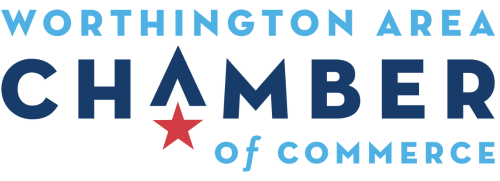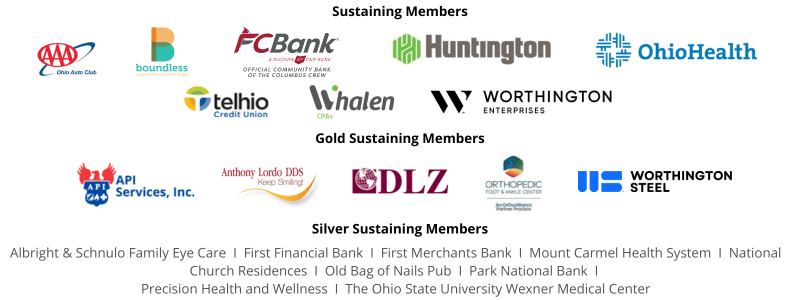What "Resident-Focused" Really Costs: A Business Perspective on Worthington's Prosperity
By Matt Gregory, Board Chair, Worthington Area Chamber of Commerce
As election season heats up, familiar phrases start making the rounds pro-business, pro-growth, resident-driven. You may even receive polished campaign letters filled with well-crafted language that seems to champion progress.
But before taking those claims at face value, it’s worth reading between the lines. Sometimes, terms that sound like smart growth or balanced development actually signal something quite different: a cautious, restrictive approach that can keep our community from growing responsibly.
Why We’re Speaking Up
The Worthington Area Chamber doesn’t typically wade into election-season debates, but the stakes for our city’s future are too high to stay quiet. The language we use around development matters because believing “feel-good” phrases without examining what they mean can have serious financial consequences.
Worthington’s economic reality is becoming urgent. According to the City’s proposed 2026 operating budget, total General Fund revenue is projected at $39.3 million, while expenses are estimated at $43.1 million leaving an anticipated deficit of $2.2 million after adjustments. To cover that shortfall, the City expects to draw from its existing General Fund balance –essentially our rainy day fund–to pay the bills in 2026.
Both the 2026 Operating Budget and Capital Improvements Plan (CIP) are still proposals. City Council will discuss them throughout November before adopting them in December. But the early numbers paint a clear picture: our current tax base isn’t keeping pace with our city’s needs. (View the proposed budget here.)
That reality underscores an essential truth: being resident-focused alone doesn’t pay the bills. Our business community funds the majority of our city’s budget through income taxes and economic activity. Without new opportunities for responsible growth–both residential and commercial–Worthington will face tough choices about what services and investments we can afford to maintain.
Why This Perspective Matters
As Board Chair, I (Matt Gregory) bring a dual perspective: I’m both a Worthington resident and a commercial real estate professional involved in economic development projects across Central Ohio. I see firsthand how other communities are embracing innovation, attracting investment, and growing their tax bases in ways that benefit residents and businesses alike.
It’s precisely because I care about my hometown and because so many of our Chamber board members and our new President/CEO are also Worthington residents that we feel compelled to speak out. We all want Worthington to thrive, not just tread water.
When Words Sound Positive but Limit Progress
In recent years, certain phrases in campaign materials and public statements have appeared supportive of economic development but, in practice, have slowed or even stopped meaningful progress. Here’s what some of those familiar terms can really mean:
Resident-First Approach → Often elevates the loudest voices over long-term planning, professional expertise, or the needs of the broader community.
The Right Kind of Developer → A subjective phrase suggesting that a select few decide what counts as “quality,” creating uncertainty for responsible development.
Smart Growth, Right Fit → Sounds pragmatic, but can be used to exclude mixed-use or higher-density projects from many areas of the city.
Projects That Reflect Community Consensus → Inclusive in theory, but in practice can allow small but vocal groups to block well-planned projects that benefit the larger community.
Distinctive, Not Generic Development → Sets an admirable but often subjective bar that can make approvals unpredictable.
Compatible With Surroundings → Frequently used to justify opposition on a case-by-case basis, even when projects align with city goals or planning principles.
When used together, these terms tend to favor preservation first and development second and only when it’s politically safe. The result is stagnation dressed up as stewardship.
Why It Matters Now
Worthington, like the rest of Central Ohio, stands at a crossroads. Our region is projected to grow by more than 726,000 residents over the next 25 years (MORPC Growth Forecast). That growth brings both opportunity and responsibility to ensure diverse housing options, thriving business corridors, and infrastructure that supports both.
At the same time, the City of Worthington is rewriting its Comprehensive Plan 2025, the roadmap for how our city will grow, where development will occur, and what types of housing and commerce we’ll encourage.
If we allow overly narrow definitions of “appropriate development” to dominate, we risk falling behind neighboring communities that are welcoming innovation, inclusivity, and smart investment.
A Balanced Approach to Growth
The Worthington Area Chamber believes that progress doesn’t mean unchecked expansion, it means intentional growth that strengthens our economy, enhances quality of life, and preserves what makes Worthington special.
That means:
- Collaboration, not division, between residents, businesses, and city leaders.
Planning guided by expertise, not politics or convenience. - Diverse housing and business options, so the next generation can call Worthington home.
- Clear, consistent standards, not shifting expectations or subjective definitions of “quality.”
A Call to Engage Thoughtfully
As you read campaign materials or attend community forums this election season, listen carefully to the language being used. Ask yourself:
- Do these policies truly support economic vitality and inclusivity?
- Do they welcome responsible growth, or preserve the status quo?
- Do they promote collaboration, or divide by appealing to fear or control?
Worthington deserves leaders who are willing to engage thoughtfully, challenge assumptions, and work together toward a thriving, forward-looking future.
Growth isn’t our enemy — complacency is.

